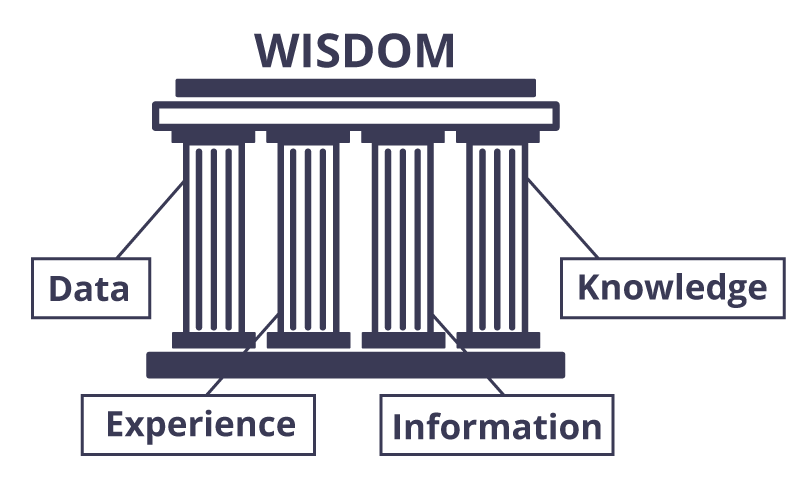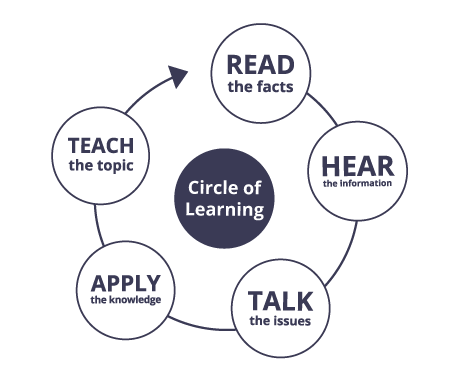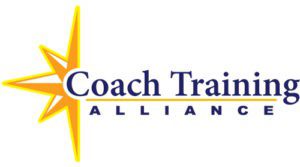Take a Look Behind-the-Scenes
Explore Coach Training Alliance’s exclusive learning methodology and trademarked system for creating “Teachable Moments”
With the amount of information doubling every 3-4 years, dropping out of continuing education is dropping out of life. It used to be you could attend school, graduate and know most everything you needed to know for the rest of your life. Today, in the fourth year of college, 60% of what students learned in their freshman year is either inaccurate or no longer applies. Can you imagine what the applicable knowledge level might be if you graduated 10 or 20 years ago?
Lifelong learning is the only sustainable competitive advantage.
School is a place you go when you want to learn something you do not know. It is, for the most part, a passive activity. Teachers lecture, you listen. This traditional approach to education does not work well for young students, much less adult learners.
Adults possess a foundation of understanding built from years of classroom learning and decades of hard-won experience. We already know a little about a lot of things. In our fast-paced lives, there just hasn’t been the time to fully experience or to apply this knowledge. Consequently, we fall just short of having the necessary wisdom to derive economic reward from this expensive “education in life.”
Coach Training Alliance’s Exclusive Learning Model enables you to experience your knowledge. It is an opportunity to know experientially what you already know conceptually. The system incorporates the Four Pillars of Wisdom™ approach and the Circle of Learning methodology.
Learning does not take place in a box we call a classroom or in a hotel conference room. We learn more, we learn better, and we learn faster by doing, by being actively involved. Learning flourishes in real-world contexts that are out-of-the-box.
As a child you could have spent years reading about riding bicycles. You could have watched a dozen instructional videos and sat through countless lectures on the topic. I would venture to guess, you learned to ride a bike within a few days with minimal scrapes and scratches. Much of what we need to learn can be acquired this very same way. It only requires employing the Nike method…
The role of the educator or mentor is to engage their students and apprentices by creating a conducive environment for generating “teachable moments.”
Falling off your bike the first time may not have been enjoyable, however, you created for yourself a teachable moment. You were honestly challenged, sufficiently motivated, and more than interested in securing the knowledge that would self-propel you faster than you had ever gone before with the wind blowing though your hair in victory.
You were fully engaged in the learning process. Consequently, your learning was accelerated and the cost to you in terms of time required and attention demanded-were minimized.
Our goal, as practitioners of the Coach Training Alliance’s Exclusive Learning Model is to create environments for accelerated learning and form ‘communities of practice.’ Our mission is to help you take the learning methodology and transform information into structured, usable knowledge.
We are committed to your success as a professional coach. We provide specific learning services and products to help you effectively achieve those objectives. We then apply time compression methods to all curriculum, coursework, and facilitation.
The result of these efforts is condensed coach training that incorporates an earn-while-you-learn apprenticeship. The program is designed to have you working and earning income before the course is complete. This is accomplished through “Just-In-Time” knowledge transfer where you learn what you need to know, when you need to know it, in order to derive the most benefit for yourself and your clients.
 Information, data, knowledge, education, and learning are words often used interchangeably as if they have approximate meanings. Without definition, they could almost work this way. The fact is they all mean something very specific and different from one another.
Information, data, knowledge, education, and learning are words often used interchangeably as if they have approximate meanings. Without definition, they could almost work this way. The fact is they all mean something very specific and different from one another.
Raw data can be but isn’t necessarily information. Unless it informs us through its structure and configuration, the value of data is limited.
Likewise, information is not knowledge. Information requires a frame of reference that enables relativity. We can only learn new ideas and concepts based on how they relate to what we already know.
The process of data becoming information and information becoming knowledge is the process of communicating, thinking and experiencing. Learning is converting accurate data into usable information and then experiencing results through application. This process is known as knowledge transfer. The flow and speed of this intellectual transfer are dependent upon the level of interest and motivation of the learner.
The swiftest vehicle for knowledge transfer is learners encountering real ideas, events, and information in meaningful contexts. Essentially, connecting knowledge and life.
Roger Schank, a Northwestern University professor and author of The Connoisseur’s Guide to the Mind, believes individuals can deal with new areas of knowledge if one knows how to learn, how to find out about what is known, and how to abandon old ideas when they are worn out. This means teaching ways of developing good questions rather than memorizing known answers.
The final leap to Wisdom is in the hands of the learner. How new knowledge is used can only be determined by those who possess it.
Words (data, information) allow for theoretical understanding. Experience enables practical knowledge. Accumulated wisdom is the discerning use of knowledge over time.
Accumulating wisdom is often accomplished through feelings, instincts, and intuition. These are the tools of wisdom and the primary tools of coaches. This entails looping around the learning cycle many times; a task best accomplished with passion, persistence, and patience. As you might imagine, there are many details that span these pillars.
 See, Listen, Do
See, Listen, Do
We Remember…
- 20% of what we read
- 30% of what we hear
- 50% of what we say
- 60% of what we do, and
- 90% of what we see, hear, say and do
Our learning experiences are unique and require we use our multiple intelligences to process information. We learn best and the fastest when the teaching and lessons match our individual learning style.
While some of us are visual learners, others learn best by listening and communication or by touching and doing. The Circle of Learning™ blends visual and audible intelligence with kinesthetic intelligence to give you a learning system tailored to you for the best learning experience short and long term.
You will revolve and evolve as you work your way around the Circle of Learning™ and through the course, the “knowledge transfer” becomes comfortable, impactful, and second nature.
The Circle of Learning™ integrates multiple learning styles into all Coach Training Alliance courses and programs. The result is a multi-sensory learning experience that continuously guides the participant toward mastery in their chosen field.Review class notes, supporting articles, and library materials in the course software (included).
Perform the Action Challenges and participate in Coach the Coach practicums throughout the program.
Listen to the recorded classes, as many times as you like, for content and real-life examples.
In the latter part of the course you will facilitate private group coaching sessions (optional).
Interact with other coaches and ask questions of the instructors in live weekly mentoring groups.
